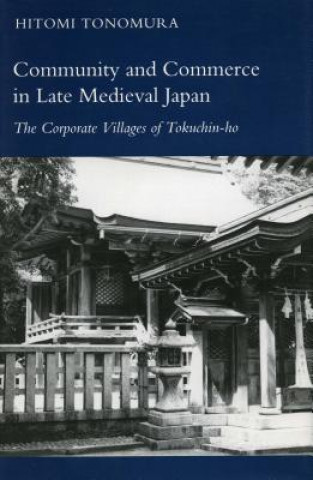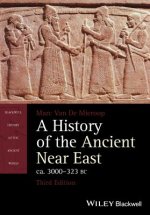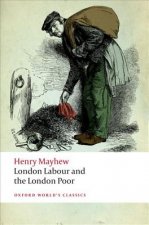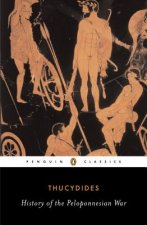
Kod: 04716073
Community and Commerce in Late Medieval Japan
Autor Hitomi Tonomura
Late medieval Japan witnessed a growth in the power of the commoner, as seen in the spread of corporate villages "(so)" marked by collective ownership and administration and other self-governing features. This study of a community ... więcej
- Język:
 Angielski
Angielski - Oprawa: Twarda
- Liczba stron: 300
Wydawca: Stanford University Press, 1992
- Więcej informacji o książce

86.33 €

Dostępna u dostawcy w małych ilościach
Wysyłamy za 11 - 15 dni
Potrzebujesz więcej egzemplarzy?Jeżeli jesteś zainteresowany zakupem większej ilości egzemplarzy, skontaktuj się z nami, aby sprawdzić ich dostępność.
Dodaj do schowka
Zobacz książki o podobnej tematyce
-

Dawn of the French Renaissance
58.32 € -

Charles Butler's Principles of Musick (1636)
182.57 € -

Ancient and Holy Wells of Dublin
21.73 € -9 % -

EAA 145: Bacton to King's Lynn Gas Pipeline, Volume 1
51.04 € -

Decameron, Italienisch-Deutsch
13.44 € -12 % -

De novo Molecular Design
178.02 € -9 %
Bon podarunkowy: Radość gwarantowana
- Podaruj bon o dowolnej wartości, a my się zajmiemy resztą.
- Bon podarunkowy dotyczy całej naszej oferty.
- Możesz wydrukować elektroniczny bon z e-maila a następnie przekazać go obdarowanemu.
- Ważność bonu wynosi 12 miesięcy od daty wystawienia.
Więcej informacji o Community and Commerce in Late Medieval Japan
Za ten zakup dostaniesz 216 punkty
 Opis
Opis
Late medieval Japan witnessed a growth in the power of the commoner, as seen in the spread of corporate villages "(so)" marked by collective ownership and administration and other self-governing features. This study of a community of so villages in central Japan from the fourteenth through the seventeenth centuries reconstructs the life of these villages by analyzing the rich and abundant communal records largely written by the villagers themselves and carefully preserved in the local shrine. The author show how these villagers founded and operated a shrine-centered organization that brought coherence, order, and prestige to the community at the same time it formalized the differences among the residents along gender and class lines. The Tokuchin-ho so was a governmental, social, and religious institution that facilitated the movement toward localism, but, the author argues, its growing collective power and organization also benefited its local proprietor, the great monastic complex of Enryakuji. Political and economic resources flowed vertically between the client-village and the patron-proprietor as they collaborated to secure internal peace and wide-reaching commercial interests. The book traces the transformation of the so as late medieval decentralization gave way to politically unified early modern society, with its enforced transfer of merchants from villages to towns, confiscation of shrine land, and the relinquishment of the so's political authority. Despite these efforts, as a powerful organization experienced in promoting communal order, the so was able to maintain its medieval legacy of self-determination, substantially preempting bureaucratic intervention in local governance. The local records allow the author to study the so from the villagers' perspective, and she presents new information on the position of women in rural communities, the local mode of economic surplus accumulation, the detailed social and economic functions of a shrine, and the reaction to nationwide cadastral surveys. The book is illustrated with 21 halftones.
 Szczegóły książki
Szczegóły książki
Kategoria Książki po angielsku Humanities History Regional & national history
86.33 €
- Pełny tytuł: Community and Commerce in Late Medieval Japan
- Podtytuł: The Corporate Villages of Tokuchin-ho
- Autor: Hitomi Tonomura
- Język:
 Angielski
Angielski - Oprawa: Twarda
- Liczba stron: 300
- EAN: 9780804719414
- ISBN: 0804719411
- ID: 04716073
- Wydawca: Stanford University Press
- Waga: 616 g
- Wymiary: 229 × 152 × 22 mm
- Data wydania: 01. January 1992
Ulubione w innej kategorii
-

Ten Myths About Israel
13.54 € -35 % -

Easy Company Soldier
16.67 € -21 % -

Cuneiform
10.30 € -28 % -

Plantagenets
13.33 € -28 % -

Decline and Fall of the Roman Empire
5.85 € -20 % -

Fall of Rome
15.26 € -28 % -

Time Traveller's Guide to Medieval England
12.93 € -22 % -

Christ Stopped at Eboli
10.30 € -28 % -

Age of the Vikings
16.47 € -13 % -

Battle for Spain
16.57 € -22 % -

Biggest Prison on Earth
13.33 € -28 % -

EM33 American Web Equipment 1910-1967
18.39 € -14 % -

Team of Rivals
15.26 € -28 % -

Federalist Papers
12.32 € -28 % -

Road To Berlin
15.36 € -27 % -

Vikings
13.23 € -15 % -

Borgias and Their Enemies
15.05 € -21 % -

Viking Britain
11.11 € -22 % -

Totalize -Tractable
22.33 € -

Writers Guide To Everyday Life In Regency & Victorian England Pod
16.67 € -16 % -

Oxford Illustrated History of Britain
29.21 € -28 % -

Book of the Dead
17.38 € -17 % -

Princess Margaret
11.31 € -28 % -

Orhan Pamuk: Balkon
29.31 € -27 % -

History of the Ancient Near East ca. 3000 - 323 BC 3e
50.24 € -8 % -

Rethinking Orientalism
31.23 € -

From Roman Britain to Norman England
56 € -

Rise and Fall of the House of Medici
13.33 € -28 % -

London Labour and the London Poor
12.12 € -24 % -

Take Six Girls
12.83 € -18 % -

Gulag
15.36 € -27 % -

Letters of the Younger Pliny
13.33 € -28 % -

Napoleon
35.98 € -2 % -

The Fourth Turning
20.61 € -6 % -

Strange Death of Europe
16.57 € -15 % -

Beyond Band of Brothers
15.26 € -28 % -

Bushido, the Soul of Japan
14.14 € -

Ethnic Cleansing of Palestine
12.93 € -25 % -

Rise And Fall Of The Third Reich
21.93 € -22 % -

Russia under Tsarism and Communism 1881-1953 Second Edition
48.72 € -

The Secret Diaries Of Miss Anne Lister: Vol. 1
13.54 € -14 % -

How to be a Victorian
13.33 € -28 % -

Benjamin Franklin
18.69 € -12 % -

History of the Peloponnesian War
16.97 € -20 % -

Strange Death of Europe
22.43 € -8 % -

Rubicon
14.55 € -15 % -

The Little Princesses
10.30 € -28 % -

Weimar and Nazi Germany
48.72 € -

Fascist Italy
46.39 €
Osobní odběr Bratislava a 2642 dalších
Copyright ©2008-24 najlacnejsie-knihy.sk Wszelkie prawa zastrzeżonePrywatnieCookies


 Vrácení do měsíce
Vrácení do měsíce Zdarma od 49.99 €
Zdarma od 49.99 € 02/210 210 99 (8-15.30h)
02/210 210 99 (8-15.30h)